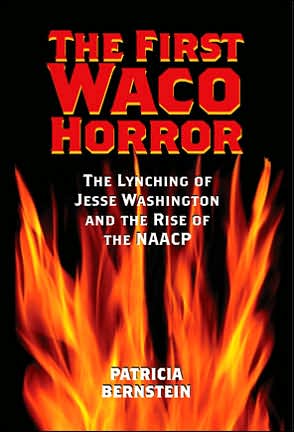
The First Waco Horror: The Lynching of Jesse Washington and the Rise of the NAACP PDF
2005·3.455 MB·other
Most books are stored in the elastic cloud where traffic is expensive. For this reason, we have a limit on daily download.
Preview The First Waco Horror: The Lynching of Jesse Washington and the Rise of the NAACP
Description:
In 1916, in front of a crowd of ten to fifteen thousand cheering spectators watched as seventeen-year-old Jesse Washington, a retarded black boy, was publicly tortured, lynched, and burned on the town square of Waco, Texas. He had been accused and convicted in a kangaroo court for the rape and murder of a white woman. The city’s mayor and police chief watched Washington’s torture and murder and did nothing. Nearby, a professional photographer took pictures to sell as mementos of that day.
The stark story and gory pictures were soon printed in The Crisis, the monthly magazine of the fledgling NAACP, as part of that organization’s campaign for antilynching legislation. Even in the vast bloodbath of lynchings that washed across the South and Midwest during the late 1800s and early 1900s, the Waco lynching stood out. The NAACP assigned a young white woman, Elisabeth Freeman, to travel to Waco to investigate, and report back. The evidence she gathered and gave to W. E. B. Du Bois provided grist for the efforts of the NAACP to raise national consciousness of the atrocities being committed and to raise funds to lobby antilynching legislation as well.
In the summer of 1916, three disparate forces - a vibrant, growing city bursting with optimism on the blackland prairie of Central Texas, a young woman already tempered in the frontline battles for woman’s suffrage, and a very small organization of grimly determined “progressives” in New York City - collided with each other, with consequences no one could have foreseen. They were brought together irrevocably by the prolonged torture and public murder of Jesse Washington - the atrocity that became known as the Waco Horror.
The stark story and gory pictures were soon printed in The Crisis, the monthly magazine of the fledgling NAACP, as part of that organization’s campaign for antilynching legislation. Even in the vast bloodbath of lynchings that washed across the South and Midwest during the late 1800s and early 1900s, the Waco lynching stood out. The NAACP assigned a young white woman, Elisabeth Freeman, to travel to Waco to investigate, and report back. The evidence she gathered and gave to W. E. B. Du Bois provided grist for the efforts of the NAACP to raise national consciousness of the atrocities being committed and to raise funds to lobby antilynching legislation as well.
In the summer of 1916, three disparate forces - a vibrant, growing city bursting with optimism on the blackland prairie of Central Texas, a young woman already tempered in the frontline battles for woman’s suffrage, and a very small organization of grimly determined “progressives” in New York City - collided with each other, with consequences no one could have foreseen. They were brought together irrevocably by the prolonged torture and public murder of Jesse Washington - the atrocity that became known as the Waco Horror.
See more
The list of books you might like
Most books are stored in the elastic cloud where traffic is expensive. For this reason, we have a limit on daily download.
